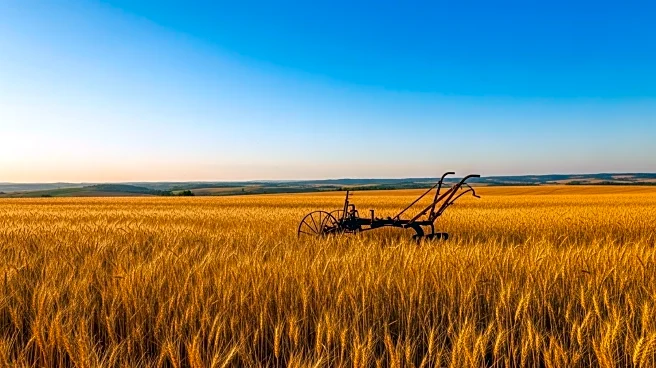What is the story about?
What's Happening?
The U.S. Department of Agriculture (USDA) has revised its forecast for farm income in 2025, citing a downturn in the crop sector despite rising incomes for cattle producers. Net cash farm income is projected at $180.7 billion, a 25.3% increase over last year when adjusted for inflation, but lower than the February forecast of $193.7 billion. Net farm income is expected to reach $179.8 billion, a 37.2% increase over 2024. The USDA attributes the higher income levels to government payments to row crop producers, which are set to hit $40.5 billion this year. However, crop receipts are expected to decline, with corn, soybean, and wheat receipts projected to fall.
Why It's Important?
The USDA's revised forecast reflects the challenges facing the U.S. agricultural sector, particularly in the crop market. The decline in crop receipts could impact farmers' profitability and influence market dynamics. Government payments play a crucial role in supporting farm income, highlighting the reliance on federal aid amid market uncertainties. The disparity between crop and livestock sectors underscores the need for targeted policies to address sector-specific issues. The forecast may influence congressional decisions on additional emergency assistance to mitigate the effects of trade policies and market fluctuations.
What's Next?
Congress is considering further emergency assistance to support producers affected by trade policies. The USDA's forecast may prompt discussions on policy measures to stabilize the crop market and enhance support for farmers. Stakeholders in the agricultural sector will likely advocate for strategies to boost crop demand and address market challenges. The USDA's projections will be closely monitored as policymakers assess the need for additional interventions to support the agricultural economy.
Beyond the Headlines
The USDA's forecast highlights the broader economic implications of agricultural market trends. The reliance on government payments raises questions about the sustainability of current support mechanisms and the need for long-term solutions. The decline in crop receipts may affect rural economies and influence land use decisions. The situation underscores the importance of diversifying income sources and enhancing resilience in the agricultural sector.
AI Generated Content
Do you find this article useful?














